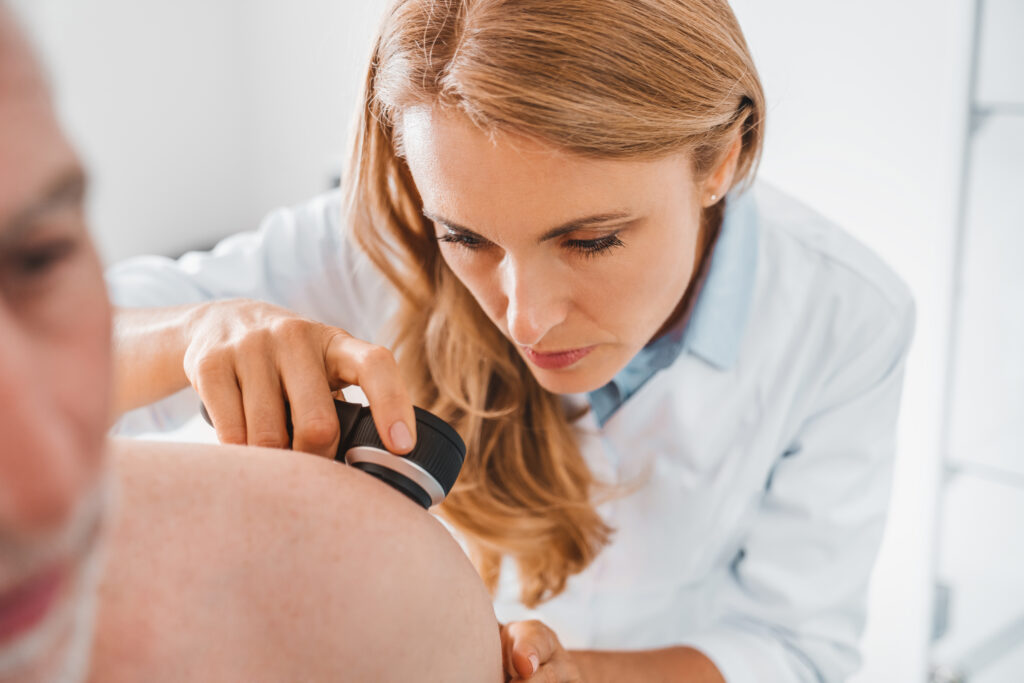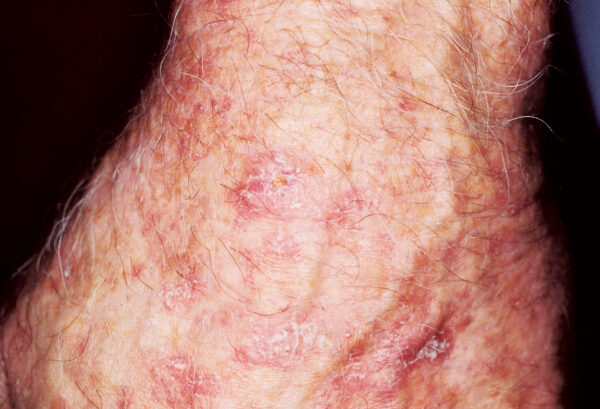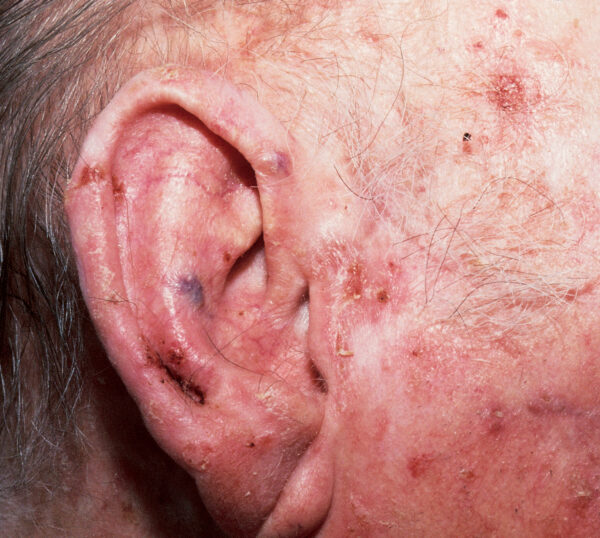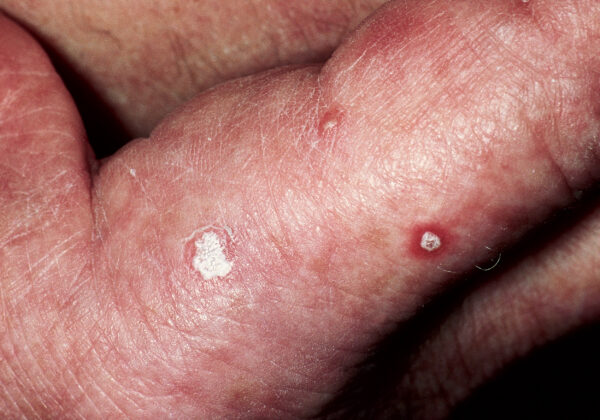Photo credit: Inside Creative House/iStock/Getty Images Plus
Q: Over the years, my dermatologist has treated several precancerous spots on my face and scalp, and yet they keep coming back. Is there anything I can do to stop them?
Jennifer M. Ridge, MD: They’re called actinic keratoses, or AKs, and I sympathize with your frustration. It can be both worrisome and annoying to treat what is seemingly the same spot again and again. But such recurrences are inherent in the nature of AKs.
These precancerous lesions result from sun damage that has occurred many years before the AK appears. The original sun exposure damages the DNA, and that starts a cascade of changes in the skin cells that may take 20 or more years to show up on the skin’s surface. I always remind my patients that their sun damage didn’t happen overnight; it was cumulative. So the precancerous cells I may be clearing out today are simply the ones that have reached the point where they’re visible and amenable to therapy. Many others are at different stages of the cycle and haven’t yet progressed to the skin’s surface. In short, what you call persistence are waves of appearances of AKs resulting from the waves of sun exposure that created them.
That said, this persistence can take two forms. Sometimes, it is a specific AK that keeps reappearing, and that is a situation that demands an aggressive approach. In treating these, I usually work through a kind of hierarchy of treatments (which may include cryotherapy, topical therapies, laser or other options) until I am satisfied that the lesion has been taken care of.
- Actinic keratoses located on the hand.
- Actinic keratoses located on the ear.
- Actinic keratoses located on the hand.
These precancerous lesions crop up on skin’s surface sometimes years after sun damage has occurred, and they can be tricky to treat. One dermatologist tells us why.
More commonly, a patient has an area, or “field,” of skin on which different lesions recur. Typically, these fields are on parts of the body where the sun shines down and has a horizontal surface to land on. These include the top of the scalp (particularly in places with no hair to shield the sun) ears and nose, forearms, the back of the hands and, on former sunbathers, places like the shins or calves. I see some patients who have a lot of field effect as frequently as every two or three months. Again, it’s the long-ago sun damage that keeps producing these new waves of lesions, combined with the fact that as you age, your immune system grows weaker and less efficient. Thus, these lesions crop up ever more quickly. This is especially true for patients who are on medications that suppress immunity.
Of course, many of the keratoses that people with sun damage get as they age and as their immune systems slow down are not precancerous AKs and can be left alone. But the average person can’t distinguish among the various spots, so I always urge my patients never to skip their annual skin cancer check, and if a new spot appears, to come in right away. With your dermatologist, you can decide on a course of treatment — there are many that are highly effective — that best suits your case.
Unfortunately, you can’t travel back in time and undo the sun damage you got when you were younger. There are, however, some preventive measures you can take now to minimize further damage. The most fundamental of these, of course, is to protect your skin from the sun every day. Eating the recommended five servings a day of fresh fruits and vegetables that are rich in vitamins A, E and beta carotene will provide the antioxidants that aid in photoprotection.
Additionally, supplements may be helpful. I recommend to patients that two to three 500 mg doses a day of the vitamin B3 supplement nicotinamide protects against some of the damage caused by UV radiation and reduces the rate of new precancerous AKs in patients who have previously had them (as well as the rates of other nonmelanoma skin cancers).
Another supplement to consider is a compound called Polypodium leucotomos. The active ingredient (from the leaves of a tropical fern) seems to inhibit damage from current sun exposure, so it could go a long way in protecting you from AKs, not to mention other negative UV effects, down the road. It’s always a good idea to talk to your doctor before starting any supplement. — Interview by Lorraine Glennon
About the Expert:
 Jennifer M. Ridge, MD, is a board-certified dermatologist in Middletown, Ohio, and has been practicing dermatology for 30 years with a subspecialty in Mohs surgery.
Jennifer M. Ridge, MD, is a board-certified dermatologist in Middletown, Ohio, and has been practicing dermatology for 30 years with a subspecialty in Mohs surgery.








